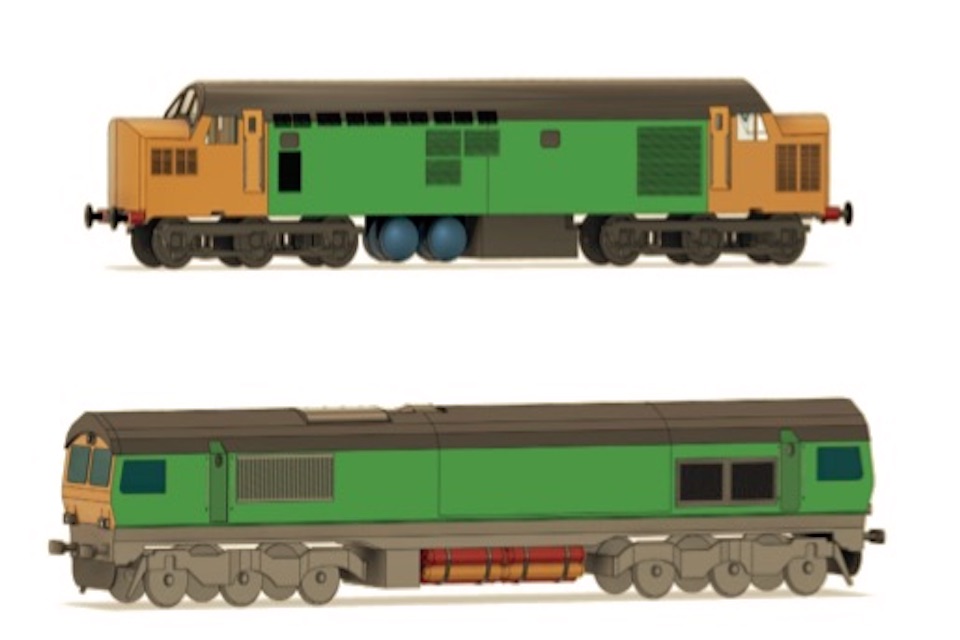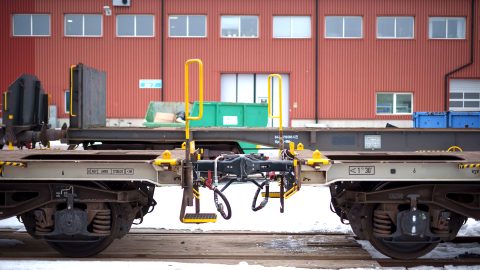Retrofit dual fuel for Britain’s freight workhorses

A partnership between two British companies promises a leap forward in fuel technology. Work by Bristol-based G-volution and SBL-Rail from Manchester could significantly reduce emissions from the existing UK fleet of diesel power units. The companies have announced a collaboration which could breathe new, and somewhat cleaner life into a variety of diesel units in use across the UK’s freight operations, notably Class 37, Class 59 and Class 66 locomotives.
Types of diesel locomotives, ranging from the heritage class 37, through to the 1980s built class 59, and the ubiquitous class 66, could all benefit from work by G-volution and SBLRail, who have been developing dual fuel engines for almost two decades, and are ready to show how there technology can benefit UK freight operations.
A pathway to decarbonise operations
Almost everyone has a concept for moving away from diesel operations, but two British companies are on the brink of introducing their solution to the market. G-volution has been developing dual fuel engines since 2008 and together with SBLRail, they want to showcase the practical technology to the industry.

“Dual fuel engines use compression ignition and combust two fuels simultaneously”, explains Shimon Shapiro, research director for the project. “This work shows how diesel fuel can be displaced by renewable net zero carbon emission fuels and how adopting dual fuel engines can be a pathway to decarbonise locomotive operations.”
Keep non-compliant units in active service
The unique part of the proposition offers multiple solutions for operators who either seek to reduce emissions or to keep potentially non-compliant units in active service. The concepts use diesel with biomethane, diesel with biopropane and diesel with hydrogen. “The Class 37’s English Electric 12CSVT and the Class 66’s EMD 12-710 engines [can be] replaced by new dual fuel engines, meeting the Stage 5 emission standard”, says Shapiro. “A twin engine concept Class 59 and Class 66 using two smaller new dual fuel engines has also been developed as well as a dual fuel evolution concept of the Class 66’s original EMD 12-710 engine. The locomotives’ original engines could also be evolved to dual fuelling too but modern engines offer higher efficiency.”
Practically, the original diesel tanks from the locomotives would be replaced with a smaller diesel tank, and cylinders for biomethane, biopropane or hydrogen which would be installed alongside. As a design concept, a
range of fuel tank solutions have been developed, including using a number of smaller cylinders instead of larger installations.
Infrastructure already exists
Both biomethane and biopropane can be manufactured by anaerobic digestion of biomass including organic food waste, farm and sewage waste. The partners point out that the production infrastructure already partly exists. “There are currently 670 such biomethane production plants in the UK”, says Shapiro. “Biomethane is a renewable fuel replacement for natural gas. Dual fuelling lowers particulate emissions too.”
The partners have backed up their claims with a raft of route simulations, demonstrating improved emissions performance over a range of scenarios. “Further work is now underway to apply our dual fuel evolutions to other types of rolling stock”, concludes Shapiro. “[This] also includes further dual fuelling concepts.” The partners say the fuelling costs, which are currently higher than straight diesel, are offset by greater efficiency. Now it’s over to the market to take a closer look.
You just read one of our premium articles free of charge
Want full access? Take advantage of our exclusive offer






There’s a fleet of fifty class 58 Locos slowly rotting away in France or have they been scrapped !! They could be got cheap and perhaps 25 good ones could be made from them !! Ditto the 56s abandoned in Spain and France!